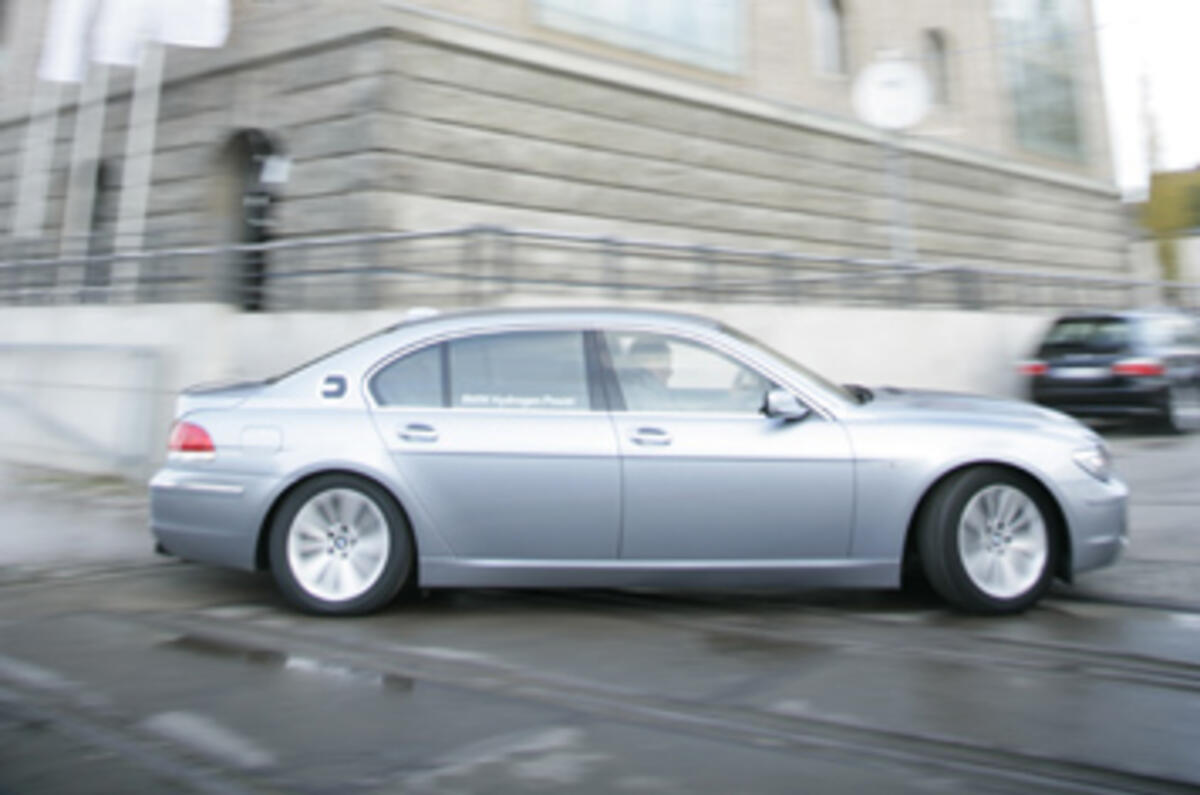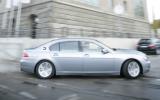What is it?
Ostensibly, a BMW 7-series – a 760iL, specifically – engineered to run on either ordinary unleaded petrol or liquefied hydrogen. When burning the latter, it emits only water vapour and trace amounts of nitrogen dioxide and harmful particulates. That, says BMW, makes it the world’s first super-low-emissions luxury vehicle, and a totally sustainable means of personal transport.
So what have Munich’s engineers done to this symbol of conspicuous consumption to turn it into a potential climate-saver? Well, surprisingly little. Externally, the Hydrogen 7 is identical to a long-wheelbase 7-series but for its 'Hydrogen' badging and slightly tweaked rear valance styling. Under the bonnet is where you’d expect most of the hard work to have been done, but actually BMW hasn’t had to do that much to its 6.0-litre V12 to make it accept hydrogen as readily as it does unleaded. It runs a slightly lower compression ratio than the standard V12, has a hydrogen injection system and an aluminium-lined induction system specifically designed to deal with the fuel. Otherwise it’s unchanged, and knocks out a steady, if slightly underwhelming 256bhp whether it’s running on petrol or hydrogen.
Where you won’t fail to identify this Seven from an ordinary 760iL, however, is when lifting the bootlid. This is where BMW has accommodated the 165-litre aluminium tank necessary to store the liquid hydrogen for the engine, and that gives the car a 120-mile hydrogen range, on top of its 300-mile petrol range.
The Hydrogen 7 does have a boot, but it’s greatly reduced in size – and there’s four inches less legroom in the back than in any other long-wheelbase Seven – another compromise made for the hydrogen tank.
What's it like?
Once it’s started up, so well-insulated is this car’s engine that you really wouldn’t know it was turning over at all, let alone be able to identify the fuel it’s burning. On the road, it’s not the most convincing exponent of BMW’s "ultimate driving machine" philosophy, and that’s because it weighs 250kg more than standard car as well as being less powerful.
Performance is acceptable, though; 0-62mph taking just over nine seconds. Top speed is limited to 143mph. BMW’s real achievement here is one of refinement rather than outright performance. When running on hydrogen, the Hydrogen 7 delivers its power just as freely and responsively as it does on petrol – and that’s a considerable success when you consider that hydrogen burns 10 times as quickly as petrol, and is therefore much more difficult to control during combustion.
You can switch from one fuel to another while the engine is running at the touch of a button on the steering wheel; there’s a momentary interruption in drive, but nothing more intrusive than a gearchange might otherwise be. And although the engine takes on a more hard-edged induction note when it’s consuming hydrogen, it remains as refined as most diesel engines, even at high revs.
Should I buy one?
Well, you can’t. BMW is only making 100 Hydrogen 7s, and will retain ownership of every one. If you’re a forward-thinking captain of industry or an environmentally-aware celebrity, you might be offered the chance to lease one for a few months – but the rest of us will have to continue to drive fossil-fuelled cars for the time being.















Add your comment